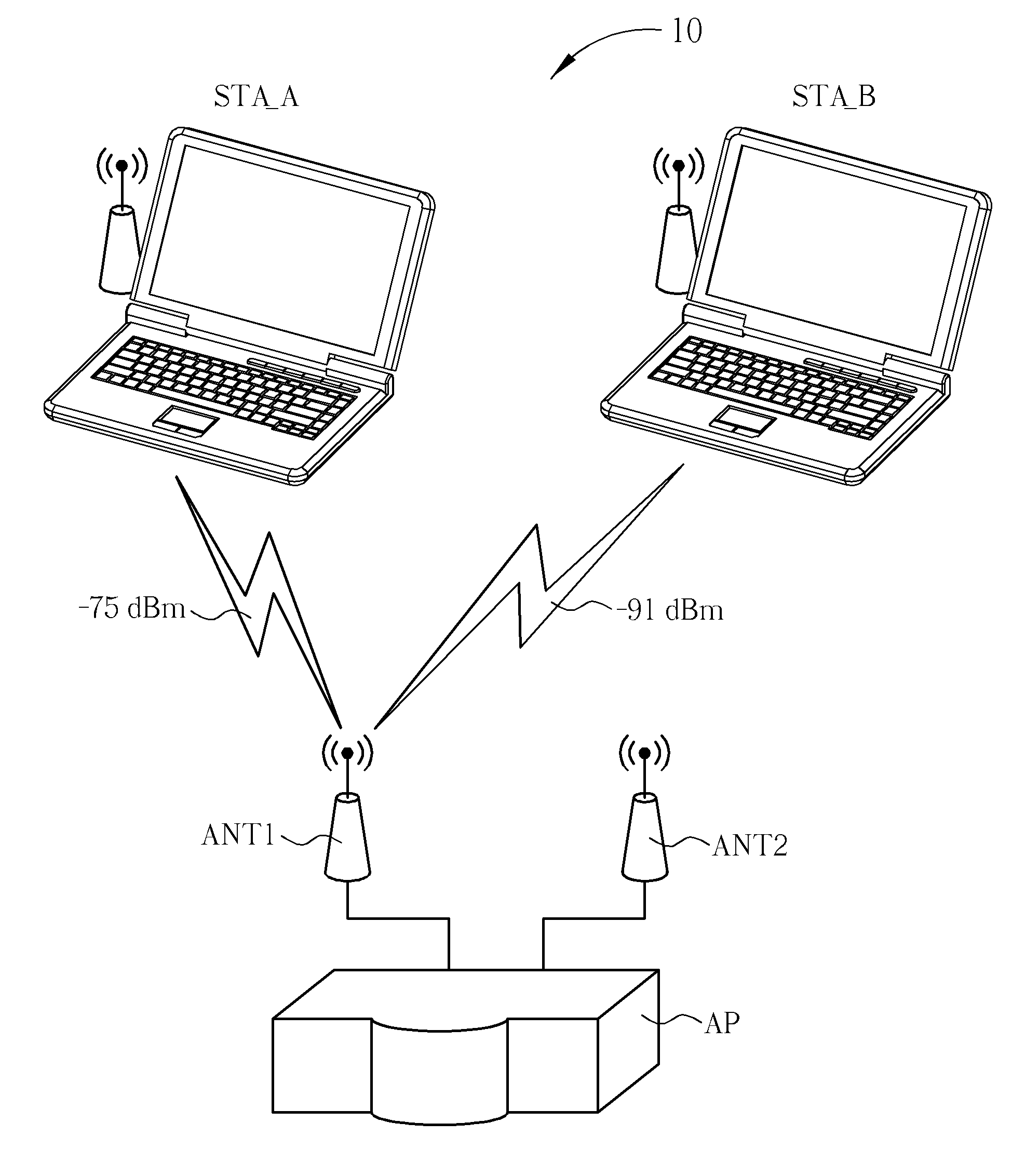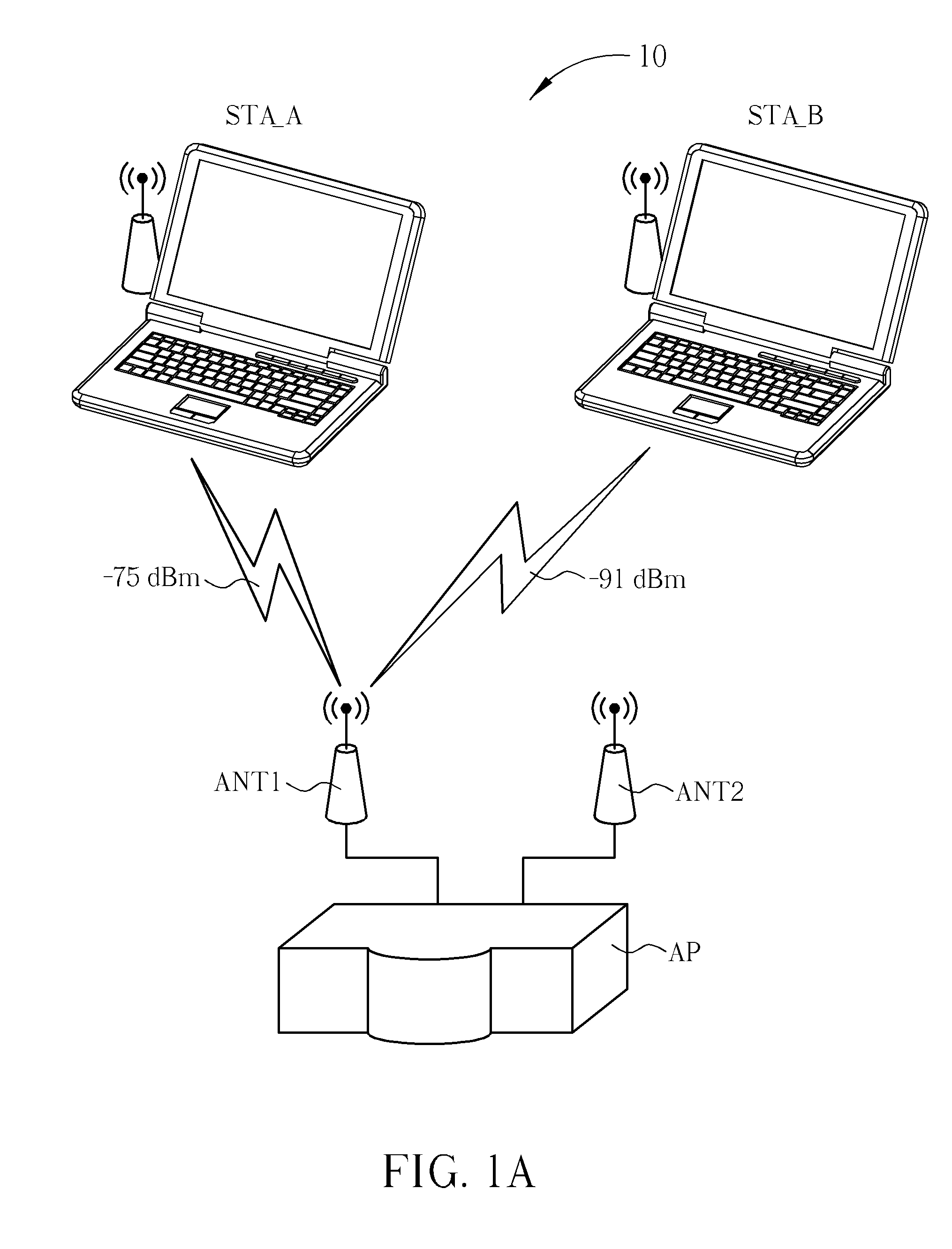Antenna Selection Method and Device
- Summary
- Abstract
- Description
- Claims
- Application Information
AI Technical Summary
Benefits of technology
Problems solved by technology
Method used
Image
Examples
Embodiment Construction
[0015]Please refer to FIG. 2, which is a schematic diagram of a wireless network system 20 according to an embodiment of the present invention. Preferably, the wireless network system 20 conforms to IEEE 802.11 wireless local area network (LAN) standards, but is not limited thereto. The wireless network system 20 includes user stations STA_A, STA_B, antennas ANT1, ANT2, an antenna selection device 200 and an access point AP. In the wireless network system 20, the user stations STA_A and STA_B may transmit and receive wireless signals to / from the access point AP via the antenna ANT1 or the antenna ANT2 to build communication transmission with the access point AP. To accommodate mobility and arbitrary connectivity characteristics of the wireless network system, the antenna selection device 200 selects a suitable receiving antenna from the antennas ANT1 and ANT2 every specific time interval, such that the user stations STA_A and STA_B may build high quality transmissions with the acces...
PUM
 Login to View More
Login to View More Abstract
Description
Claims
Application Information
 Login to View More
Login to View More - R&D
- Intellectual Property
- Life Sciences
- Materials
- Tech Scout
- Unparalleled Data Quality
- Higher Quality Content
- 60% Fewer Hallucinations
Browse by: Latest US Patents, China's latest patents, Technical Efficacy Thesaurus, Application Domain, Technology Topic, Popular Technical Reports.
© 2025 PatSnap. All rights reserved.Legal|Privacy policy|Modern Slavery Act Transparency Statement|Sitemap|About US| Contact US: help@patsnap.com



